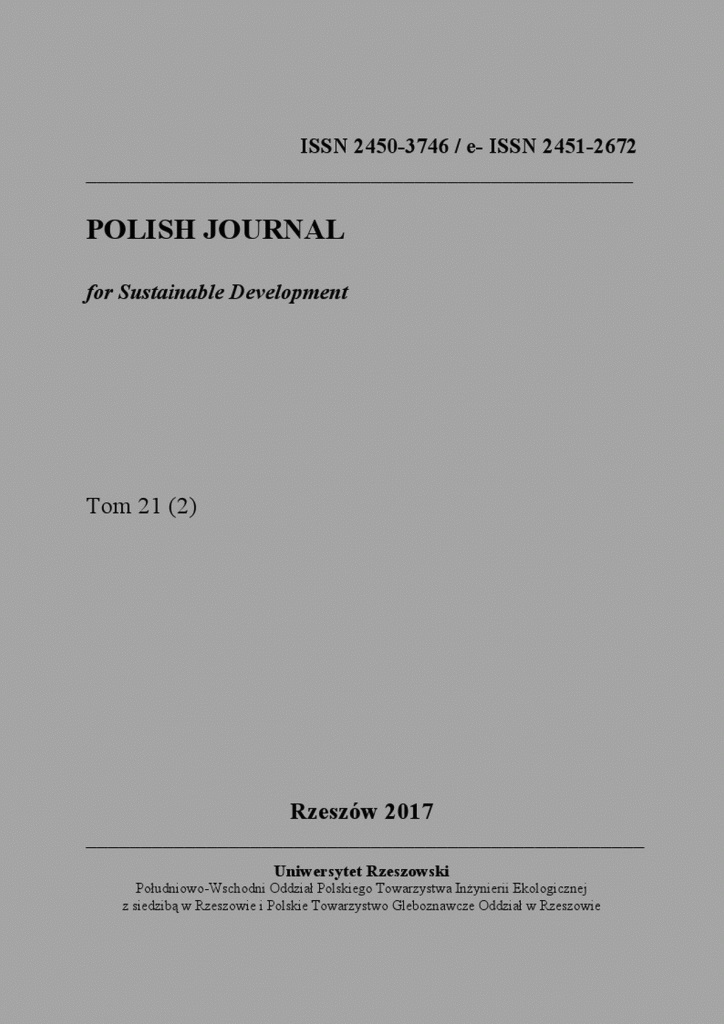Night shift work – does it mean light pollution as well?
DOI:
https://doi.org/10.15584/pjsd.2017.21.2.13Keywords:
light pollution, diurnal rhythm, biological clock, pineal gland, melatonin, night shift workAbstract
Light pollution denotes an excessive presence of the artificial lighting, particularly at night (ALAN). Since the electricity introduction people started to be active all-round the 24-hs period. However, human physiology is adapted to the regular sequence day/night with the activity during the day and the nocturnal relax and sleep. Diurnal organization of the physiological processes is controlled and synchronized by the endogenous molecular mechanism known as a biological clock with a master structure located within the hypothalamic suprachiasmatic nuclei (SCN). Information about the external lighting conditions is relayed from the special retinal receptors via SCN to the pineal gland synthesizing melatonin, a hormone of darkness. ALAN from various sources, including night shift work and/or electronic devices, evokes misalignment of the endogenous clock and physiology desynchronization. These circumstances are resulting in several civilization-related illnesses, including some cancer types, depression, and metabolic and sleep disorders.
Downloads
References
Balsalobre A. 2002. Clock genes in mammalian peripheral tissue. Cell Tissue Res. 309. 193-199.
Bell-Pedersen D., Cassone V.M., Earnest D.J., Golden S.S., Hardin P.E., Thomas T.I., Zoran M.J. 2005. Circadian rhythms from multiple oscillators: lesson from diverse organisms. Nat. Rev. Genet. 6. 544-556.
Berson D.M., Dunn F.A., Takao M. 2002. Phototransduction by retinal ganglion cells that set the circadian clock. Science. 295. 1070-1073.
Bonmati-Carrion M.A., Arguelles-Prieto R., Martinez-Madrid M.J., Reiter R., Hardeland R., Rol M.A., Madrid J.A. 2014. Protecting the melatonin rhythm through circadian healthy light exposure. Int. J. Mol. Sci. 15. 23448-23500.
Froy O. 2007. The relationships between nutrition and circadian rhythms in mammals. Frontiers Neuroendocrinol. 28. 61-71.
Fu L., Lee C.C. 2003. The circadian clock: pacemaker and tumor suppressor. Nat. Rev. Cancer. 3. 350-361.
Gaston K.J., Gaston S., Bennie J., Hopkins J. 2015. Benefits and costs of artificial nighttime lighting of the environment. Environ. Rev. 23. 14-23. dx.doi.org/10.1139/er-2014-0041.
Haim A, Zubidat A.E. 2014. Artificial light at night: mel;atonin as a mediator between the environment and epigenome. Phil. Trans. R. Soc. B. 370. 20140121. http://dx.doi.org/10.1098/rstb.2014.0121
Hastings M.H., Reddy A.B., Maywood E.S. 2003. A clockwork web: circadian timing in brain and periphery, in health and disease. Nat. Rev. Neurosci. 4. 649-661.
Hill S.M., Belancio V.P., Dauchy R.T., Xang S., Brimer S., Mao L., Hauch A., Lundbreg P.W., Summers W., Yuan L., Frasch T., Blask D.E. 2015. Melatonin: an inhibitor of breast cancer. Endocrine-Related Cancer. 22. R183-R204.
IARC. Amerykańska Agencja ds Badań nad Rakiem [dok. elektr. www.cancer.org, data wejścia 4.10.2017]
Krzeptowski W.D. 2012. Molekularne mechanizmy zegara okoodobowego, czyli jak organizmy mierzą czas. Kosmos. 61. 305-318.
Laemans J., Depoortere I. 2016. Chronobesity: role of the circadian system in the obesity epidemic. Obesity Rev. 17. 108-125.
Loef B., van Baarle D., van der Beek A.J., van Kerkhof L.W., van de Langberg D., Proper K.L. 2016. Klokwerk+study protocol: An observational study to the effects of night-shift work on body weight and infection susceptibility and the mechanism underlying these health effects. BMC Public Health. 16. 692. DOI 10.1186/s12889-016-3317-1.
Navara K.J., Nelson R.J. 2007. The dark side of light at night: physiological, epidemiological, and ecological consequences. J. Pineal Res. 43. 215-224.
Reiter R.J. 1993. The melatonin rhythm: both a clock and a calendar. Experientia. 49. 654-664.
Skwarło-Sońta K. 2014. Melatonina: hormon snu czy hormon ciemności? Kosmos. 63 (2). 223-231.
Skwarło-Sońta K. 2015. Skażenie światłem: co dziś wiemy o jego wpływie na funkcjonowanie organizmu człowieka. Kosmos. 64 (4). 633-642.
Stevens R.G., Blask D.E., Brainard G.C., Hansen J., Lockley S.W., Provencio I., Rea M.S., Reinlib I. 2007. Meeting report: The role of environmental lighting and circadian disruption in cancer and other diseases. Environ. Health Perspect. 115. 1357-1362.
Stevens R.G., Zhu Y. 2015. Electric light, particularly at night, disrupts human circadian rhythmicity: is that a problem? Phil. Trans. R. Soc. B. 370. doi. org/10.1098/rstb.2014.0120.
Suwazono Y., Dochi M., Sakata K., Okubo Y., Oishi M., Tanaka K., Kobayashi K., Kido T., Nogawa K. 2008. A longitudinal study on the effect of shift work on weight gain in male Japanese workers. Obesity. 16. 1887-1893.
Zużewicz M., Zużewicz K. 2016. Chronobiologiczne aspekty ryzyka zdrowotnego u pracowników zmianowych nocnych. Bezpieczeństwo Pracy. 12-17. DOI: 10.5604/01377043.1199410.
Downloads
Published
Issue
Section
License
Copyright (c) 2017 Polish Journal for Sustainable Development

This work is licensed under a Creative Commons Attribution-NonCommercial-NoDerivatives 4.0 International License.


